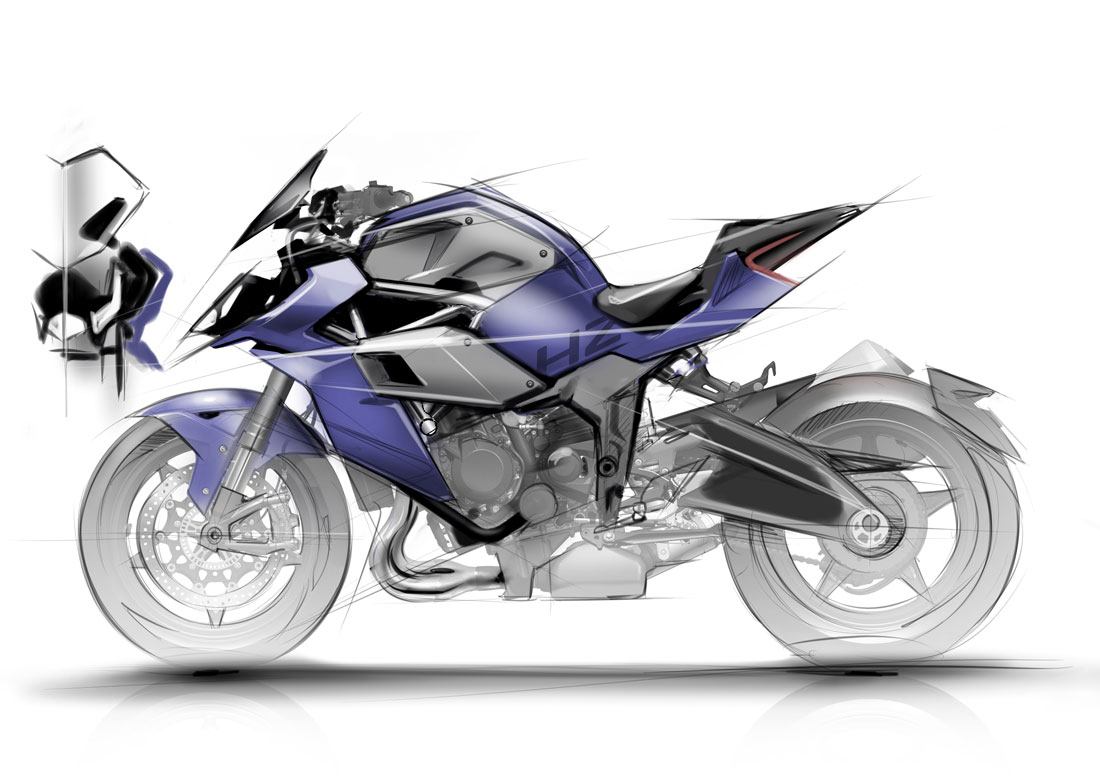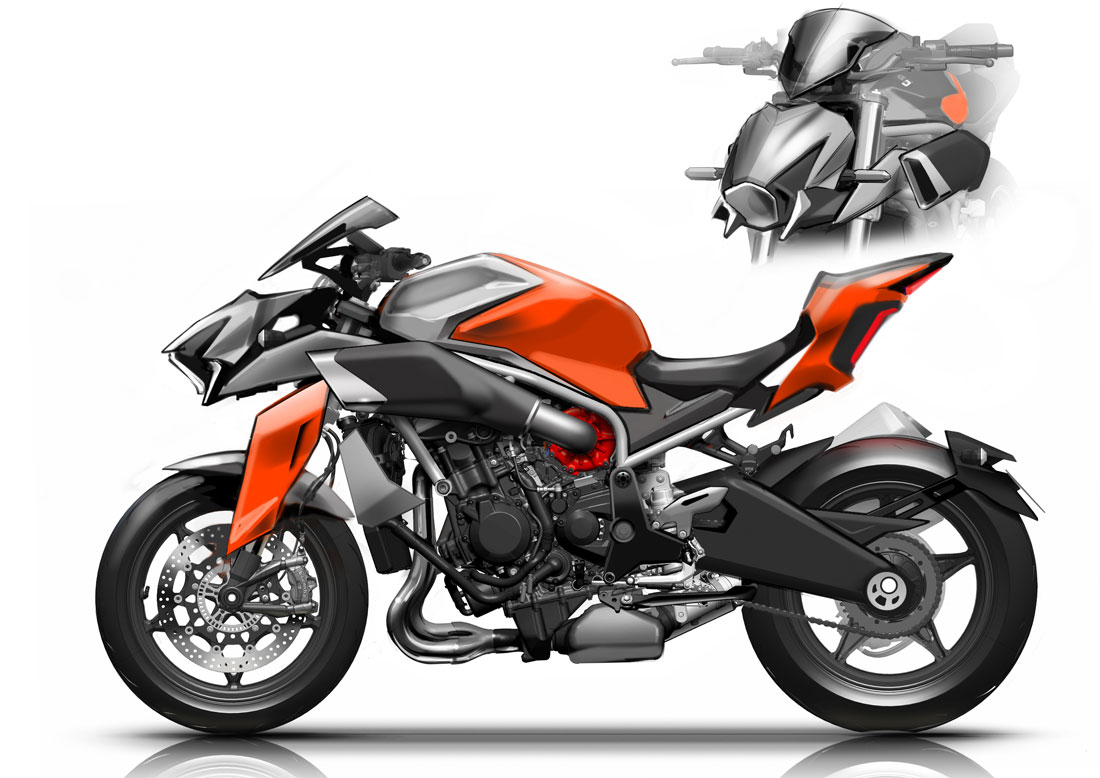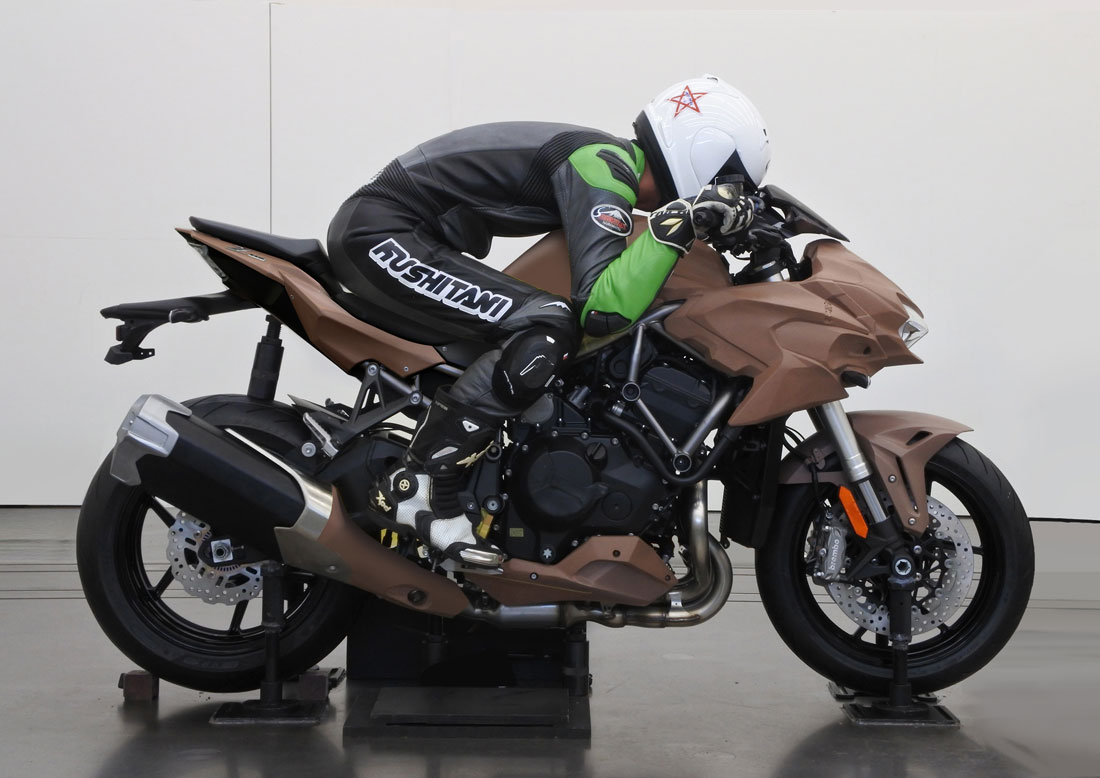The Kawasaki Z H2 is the most powerful naked bike ever produced by Kawasaki. Equipped with the same 1.0 supercharged four-cylinder engine as the Ninja H2 and H2R, it boasts an hp of 200. This vocation for uncompromisingly high performance is also clearly reflected in the styling. It is Mitsuru Kobayashi himself, designer of Kawasaki’s motorcycle division, who tells the story of how it was designed.
The “Sugomi Design”
“The bike fully respects our Sugomi approach to design”, explains Kobayashi. “It blends style and technology in a balanced, harmonious way and enhances both aspects without either having an edge over the other. On a motorcycle like the Z H2, then, the emphasis has been placed on the concept of power and performance inspired by the vision of a crouching predator ready to pounce”.
Form and function
“The design is minimalist and every styling element has a specific function. This is demonstrated by the absence of covers or guards: only those that are absolutely necessary have been fitted. But there can be no doubt the bike is a Kawasaki. First of all because it shows off a supercharged engine which no other manufacturer produces. And then because its overall aggressiveness mirrors that of other models in the range. You find elements of the Z family, but also of the H2 family”.
The game of proportions
“Everything revolves around the front end and the line running from the head to the fuel tank”, continues Kobayashi. “The asymmetrical design is a strong feature. The air intakes on the Z H2 are in fact different on the right and left sides. This is due to the presence of supercharging, which demands specific air flow solutions. To enhance design aggressiveness, the proportions between the more voluminous front, and the slimmer, slanting tail came very much into play”.
Supersport performance
Given that this is a bike with supersport performance, great attention was also paid to the design of the trellis frame. “One of the few coloured parts of the bike, the frame is compact and light”, explains Kobayashi, “but it offers the right balance between stiffness and flexibility to ensure great rideability on any type of route”.
Minimalism and technology
“When designing the bike, we didn’t start from any particular part, but followed an overall vision that led to the definition of all the main elements at more or less the same time. The most difficult thing to define was the connecting line between the headlight and the rest of the bike. There’s a lot of electronics and we had to find a way to keep the design minimalist while still covering the components we didn’t want to display”.
(Full article in A&D no. 241)
















